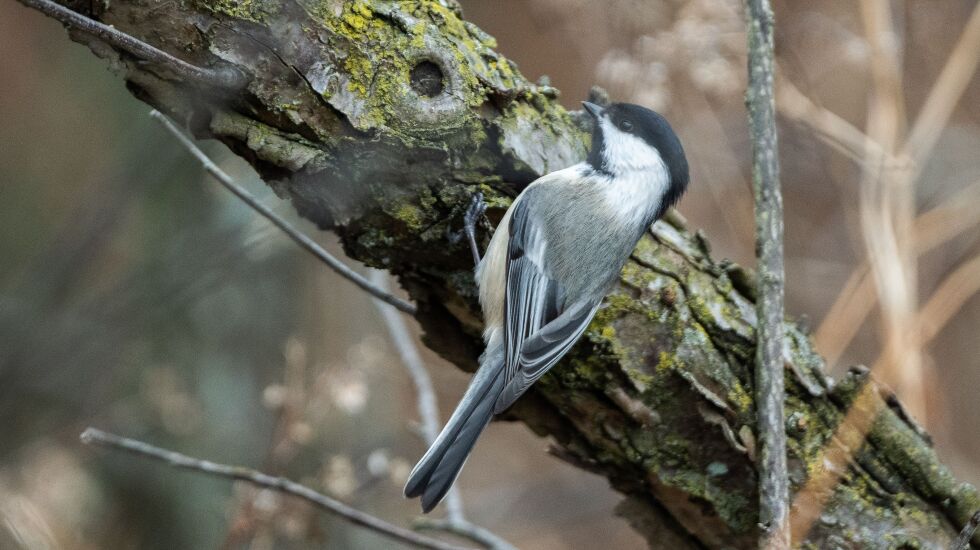
We asked Joanne Fessett, executive director of the Illinois Audubon Society, for recommendations on where to look and also to discuss how climate change is affecting bird patterns
Melba Lara: Which bird species are most visible in the Chicago area this time of year?

Joanne Fessett: When people think about birds in the winter, one of the first birds that comes to mind, I’m sure, is the cardinal, and that’s bright red. And when you’re out birding in the wintertime, you know, there’s not a lot of leaves in the trees. There’s not a lot of cover, and the cardinals really stand out.
We’ve got our usual little year-round residents: the chickadees, white- and red-breasted nuthatches, downy woodpeckers.

Another typical winter bird — one of my favorites — is the snowbird or junco, which is dark on the back and has the white belly. There’s plenty of those around.
Lara: What are some spots where people can go looking for birds?
Fessett: One of the favorite ones, of course, is Montrose Point. Northerly Island. And then one of my personal favorites is the Bill Jarvis Bird Sanctuary. That’s a great one.

And then, if you want to go a little further north, the Botanic Garden. Fort Sheridan Forest Preserve is a great place. And Illinois Beach State Park is a good place, too.
Lara: Does climate change affect what birds are here in the wintertime?
Fessett: Yes, climate change is affecting us more and more. When you think about what birds are here, what birds aren’t here, you gotta remember that their main purpose at this time of year is to eat. They’re looking for prey. They’re looking for food sources.
So, in the instance of raptors, if there’s not a lot of snow cover further north of us, which there isn’t yet a whole lot, they’re fine with staying where they’re at. It’s a little bit warmer, their prey is out, and they can get out in the fields.
Now, if we suddenly started having some snow events, they’re going to need to go further south.
Lara: So, if it’s warmer further north in Wisconsin or in Michigan, and the birds can find their food sources up there, they’re not going to show up here necessarily?
Fessett: That’s correct.

Lara: It sounds like bird watchers provide a lot of real time data to scientists, and it can help them track how bird patterns are changing, right?
Fessett: Oh, my gosh, yes. They’re the boots on the ground that are returning the data that the scientists are using.
We’ve all heard the term citizen scientists. Well, we just recently completed our Christmas bird count, which is a great way to provide data for what is here in the winter to see the changes.
But year-round so many of our bird watchers record their data on eBird. And that is just such a great dataset that the scientists can tap into and use because that is showing us trends.
Birds are indicators. They’re great indicators of what’s going on because something happens, and they react.







